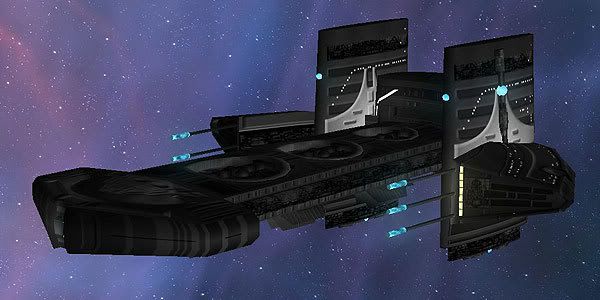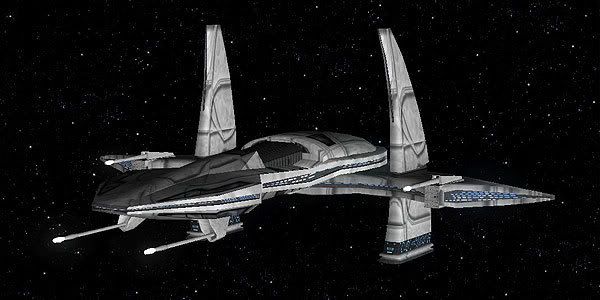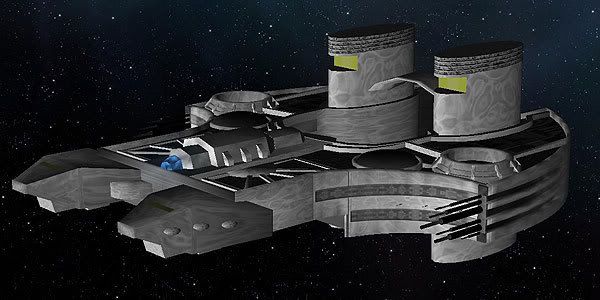The Asgard Union of Taerkasten


The Asgard Union of Taerkasten is a sovereign nation inhabited by members of the Asgard species. It was a mining colony originally established by the Asgard homeworld of Orillia at the edge of the Ida galaxy, left to its own devices for several centuries and ultimately left behind after the destruction of Orillia. The newly-formed Taerkasten High Council declared the colony world independent, and it has become a powerful nation in its own right since.
Planetology
Planet Taerkasten orbits a type G2 yellow dwarf star also called Taerkasten, which is roughly comparable in size, temperature and luminosity to Sol.
The planet itself has a slightly thinner atmosphere, with slightly lower quantities of greenhouse gases, than Earth, meaning the highest and lowest temperatures recorded tend to be slightly more extreme. Overall, though, the planet is similar to Earth.
There are six continents, each of which is considered to be an administrative borough, and a wide range of topography including deserts and jungles around the equator, frozen icecaps on each pole with cold areas of tundra on the northernmost and southernmost areas of the continents, and more temperate wood and grasslands in-between. The planet is particularly famous for having extremely dense foliage, even in the more temperate regions, with comparatively little wildlife, which has given rise to a slightly higher amount of oxygen in the atmosphere than Earth.
The zero line of longitude has been established as running through the central square area of Taerkast City, with most high density industrialised cities being located to the west, and generally more agricultural and scientific areas and low-density towns and cities to the east. Mining takes place in locations all over the surface of the planet, as well as underwater and on both moons.
Asgard technology is clean and environmentally friendly, and has been for millennia, making the planet pollution-free and pleasant to live on. The main environmental issues at present involve the level of mining being undertaken, and fears that any level of mining will destroy the natural habitat. The High Council is attempting to develop a solution to satisfy all parties.
Physical Characteristics:
Mean Radius: 6,472 km
Mean Circumference: 40,120 km
Surface Area: 602,678,005 km²
Land Area: 138,615,941 km² (23%)
Water Area: 464,062,064 km² (77%)
Mass: 6.1736×1024 kg
Equatorial Rotational Velocity: 491.6 m/s
Orbital Characteristics:
Mean Orbital Distance: 1.014 A.U.
Average Orbital Speed: 30.1521 km/s
Satellites: 2 (New Orillia, New Othala)
Atmosphere:
Pressure: 99.1 kPa (sea level)
Composition: 76.7% nitrogen, 22.61% oxygen, 0.6% argon, 0.029 carbon dioxide, trace water vapour
Environment:
Average Surface Temperature: 13.9 °C
Highest Surface Temperature: 62.5 °C
Lowest Surface Temperature: -94 °C
Environment: Frozen northern pole, temperate northern hemisphere, equatorial deserts and jungles, temperate southern hemisphere, frozen southern pole
Elevation Extremes:
Highest Point: Midgard Mountain, 8,169 m
Lowest Point: Black Sea, -561 m
Natural Resources:
Iron, silicon, magnesium, nickel, titanium, aluminium, calcium, tin, copper, beryllium, boron, trinium, sodium, cobalt, naqahdah, naqahdriah, potassium, uranium, carbon (oil), zinc.
Natural Hazards:
Weather is mostly Earth standard. Risk of hurricanes in the north east, tornadoes in the south east. Southern coast of the easternmost continent suffers from regular tsunamis and floodings. Equatorial regions become very hot during summer, too hot for both asgard and humans.
Current Environmental Issues:
Trinium mining has caused significant damage to numerous ecological zones, risk of extinction high. Flood defences in the southern coast of the easternmost continent are heavily criticised. Naqahdriah deposits are dangerous to mine, and the risk of planet-devastating explosion has seen mining efforts put on hold.
International Environmental Agreements:
Strict internal regulation only.
People
Population:
12,417,000,000 (13/11/13 estimate)
Age Structure:
0-14 years: 24%
15-64 years: 72%
65 years and over: 4%
Median Age:
Total: 27.2
Sex Ratio:
Asgard are gender neutral.
Life Expectancy At Birth:
Total Population: 126.9 years
Nationality:
Noun: Taerkast(s)
Adjective: Taerkasteni
Ethnic Groups
Asgard, 100%
Religion(s):
Atheist 100%
Languages:
Asgard
Literacy:
Definition: Age 1 and over can read and write
Total Population: 100% (23/04/07 estimate)
Government
Country Name:
Long Form: Asgard Union of Taerkasten
Short Form: Asgard Union (or simply Asgard)
Former: Taerkast Colony
Government Type:
High Council (representative democracy)
Capital:
Taerkast City
Administrative Divisions:
6 boroughs
Independence:
Taerkasten, originally established as a mining colony, was declared independent from the original Asgard nation when Orillia was destroyed.
National Holiday:
Taerkasten celebrates no less than eight officially recognised national holidays, four of which are specifically in celebration of the four seasons, the rest are equally dispersed in-between.
Constitution:
Formal constitution was ratified by the Taerkast High Council on Independence Day.
Legal System:
Federal court system with similarities to common law and civil law; rare crime means limited resources.
Suffrage:
All Asgard are eligible to vote from the moment of cloning completion
Executive Branch:
Head of State: Supreme Commander Végeirr, second in command Councillor Kolbeinn - note, Supreme Commander both head of state and head of government
Head of Government: Supreme Commander Végeirr, second in command Councillor Kolbeinn
Cabinet: High Council - six Councillors (including Supreme Commander) representing administrative boroughs
Elections: Biannually
Legislative Branch:
Direct democracy via advanced nationwide instantaneous and secure communication systems.
Judicial Branch:
High Council is the highest court of appeal and the law-making entity. Given the rarity of crime on Taerkasten and its colonies, only a single judge-and-jury High Court exists, in Taerkast City
Flag description:
Gold sword against the outline of the Great Golden Shield, on a black background. This flag, symbolising protection, was designed shortly after independence.
Economy
The Taerkasten economy is powerful and robust, with key areas being mining, manufacturing and extremely advanced technologies. All industry is communally-owned, and money does not exist. The High Council makes efforts to 'translate' the Taerkasten economy into foreign figures in order to establish a comparison, but this is not considered important.
In particular, ship building and planetary defence systems have become particularly strong in recent years, with support in these two areas no longer being provided by the Asgard homeworld. Exports, however, are limited almost entirely to mined and refined materials (not including neutronium or trinium, both of which are considered too valuable to export) and food products, due to the traditional fear Asgard have of their technology falling into the wrong hands.
Gross Domestic Product:
$353,963,282,653,586 (^)
GDP Per Capita:
$28,506 (^) (13/11/13 estimate)
GDP -- Composition By Sector:
Primary: 0.1%
Secondary: 72.6%
Tertiary: 27.3
Labour Force:
77% of the total population
Labour Force -- By Occupation:
Agriculture: 0.001%
Industry (Inc. Logging): 73.2%
Retail: 26.799%
Unemployment Rate:
2.66% (^) (13/11/13 estimate)
Budget:
Revenues: $55,929,134,731,725 (^)
Expenditures: $51,454,803,953,187 (^)
Agriculture -- Products:
Biopaste, various native fruits and vegetables
Industries:
Mining, neutronium production, shipbuilding, heavy machinery, advanced technologies, weapons, shields, scientific equipment, biopaste
Electricity:
Neutrino ion generators, solar microwave satellites
Currency:
N/A
Military
The Asgard Union of Taerkestan employs a unitary military organisation known as the Asgard Defence Force, which incorporates both the naval and ground forces common to most nations. These two departments are referred to simply as the Asgard Naval Solution and the Asgard Ground Solution. The ADF, as it is commonly abbreviated, is designed primarily to fulfil defensive and exploratory roles as is typical of the Asgard, but it is also capable of offensive actions should the need arise. Asgard traditionally find the prospect of warfare distasteful, however, so all diplomatic avenues will be explored fully long before a military solution is considered.
The Asgard Naval Solution is tasked with maintaining a fleet of space faring capital and support ships with the aim of protecting allied planets, ships and territories and, where necessary, engaging hostile planets, ships and territories and successfully deploying ground forces to any of these locations. They are also responsible for maintaining law and order in space, which is beyond the jurisdiction of Taerkasten Civil Protection authorities, and for supporting and maintaining exploratory missions.
As part of these duties the ANS fields numerous (as of writing, just over 1,500) highly advanced capital ships, with the most common of these being the Beliskner-class cruiser (also referred to as an 'Asgard mothership'). Their most powerful capital ship at present, however, is the Valhalla-class Battleship. All Asgard capital ships are equipped with extremely powerful and advanced energy weapons and defence shields, with extremely resilient nutronium hulls, and they are powered by high-capacity neutrino ion generators. Because these extremely advanced ships are costly and time-consuming to build, and because Asgard military tactics generally rely on overwhelming opponents with powerful technology, their fleet is fairly small compared to those employed by similarly-sized nations.
The Asgard Ground Solution is tasked with maintaining a powerful and mobile ground and ship-board assault force capable of defending and assaulting static targets, as well as engaging in peacekeeping, patrolling, and ship boarding actions.
The standard soldier of the AGS is known as a Berserker, and as standard they are equipped with powerful energy pulse rifles, discrete exoskeletal strength enhancement suits (to counteract the diminutive stature of typical Asgard), moderately powerful personal shields, and numerous communications systems to aid in logistics and beaming even when enemies are running interference. They also have access to armoured ground units and small atmosphere-capable spacecraft, all deployed from orbital capital ships. As with the ANS, individual troops are extremely costly to field due to extensive training and large quantities of advanced technologies, making their infantry fighting force comparatively small but mobile and highly effective. Due to Asgard reliance on orbital attacks and strategic use of their teleportation technologies the AGS is not often deployed in anger, and is reserved primarily for boarding and defence operations.
Funding to the ADF has been increasing gradually ever since support from the Asgard homeworld ended.
Military Branches:
Asgard Defence Forces
Military Age & Obligation:
No obligation. Asgard can join any time they wish from the moment of cloning until the age of 60.
Current Military Personnel:
915,000
Military Expenditures:
$15,950,989,225,488 (^)
History
Taerkasten was originally settled by Asgard several centuries ago as a mining colony. It is the closest habitable planet to a neutronium-rich neutron star, and was primarily set up to harvest and process the valuable material. The planet was also particularly rich in other, more common metals and materials such as Naqahdah, trinium, iron and titanium, with extensive and untapped oil deposits also proving to be cheap sources of carbon.
Taerkasten was almost forgotten to the Asgard homeworld as the centuries passed. By the time of Orillia's self-destruction, the small mining colony had evolved into a powerful, sophisticated and highly-populated nation in its own right. When it became clear that support from the homeworld was at an end, the local governors established Taerkasten's own High Council and declared the planet and its surrounding territories independent.
Modern-day Taerkasten is a powerful and industrialised society, renowned for its high level of civilisation and culture. The nation continues the tradition of producing highly advanced Asgard technology, which it employs on its own defensive forces. As development continued, Taerkasten established three new colonies in neighbouring star systems to improve its mining efforts and expand its industrial base.
Present concerns are mostly environmental and political.




